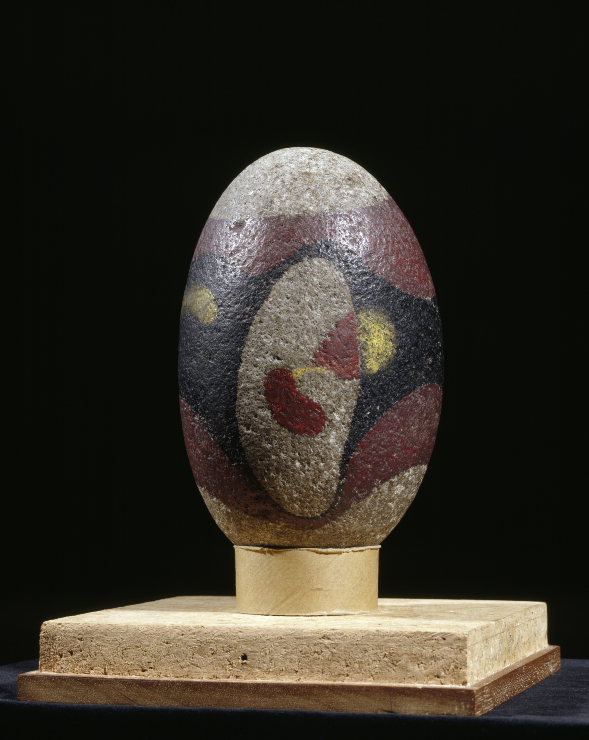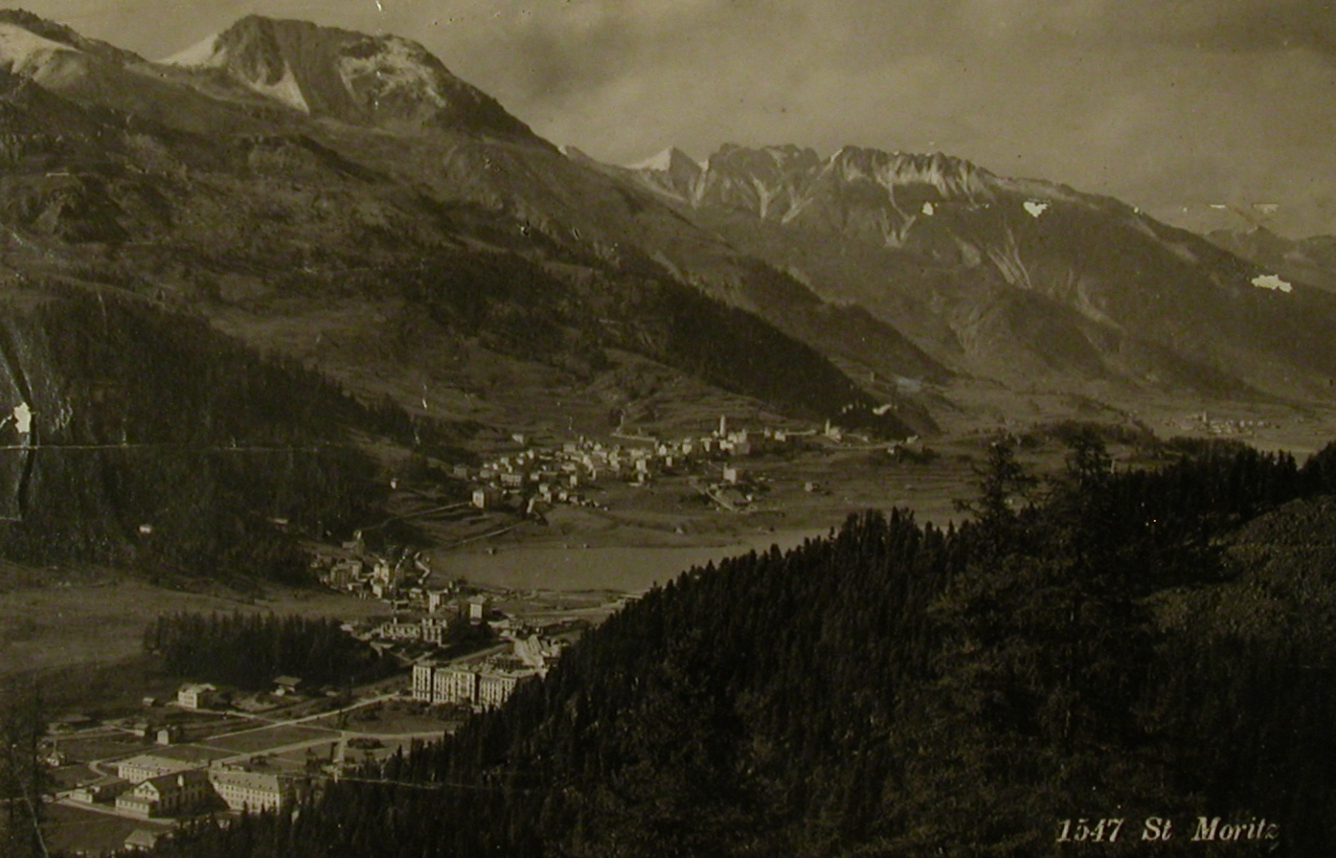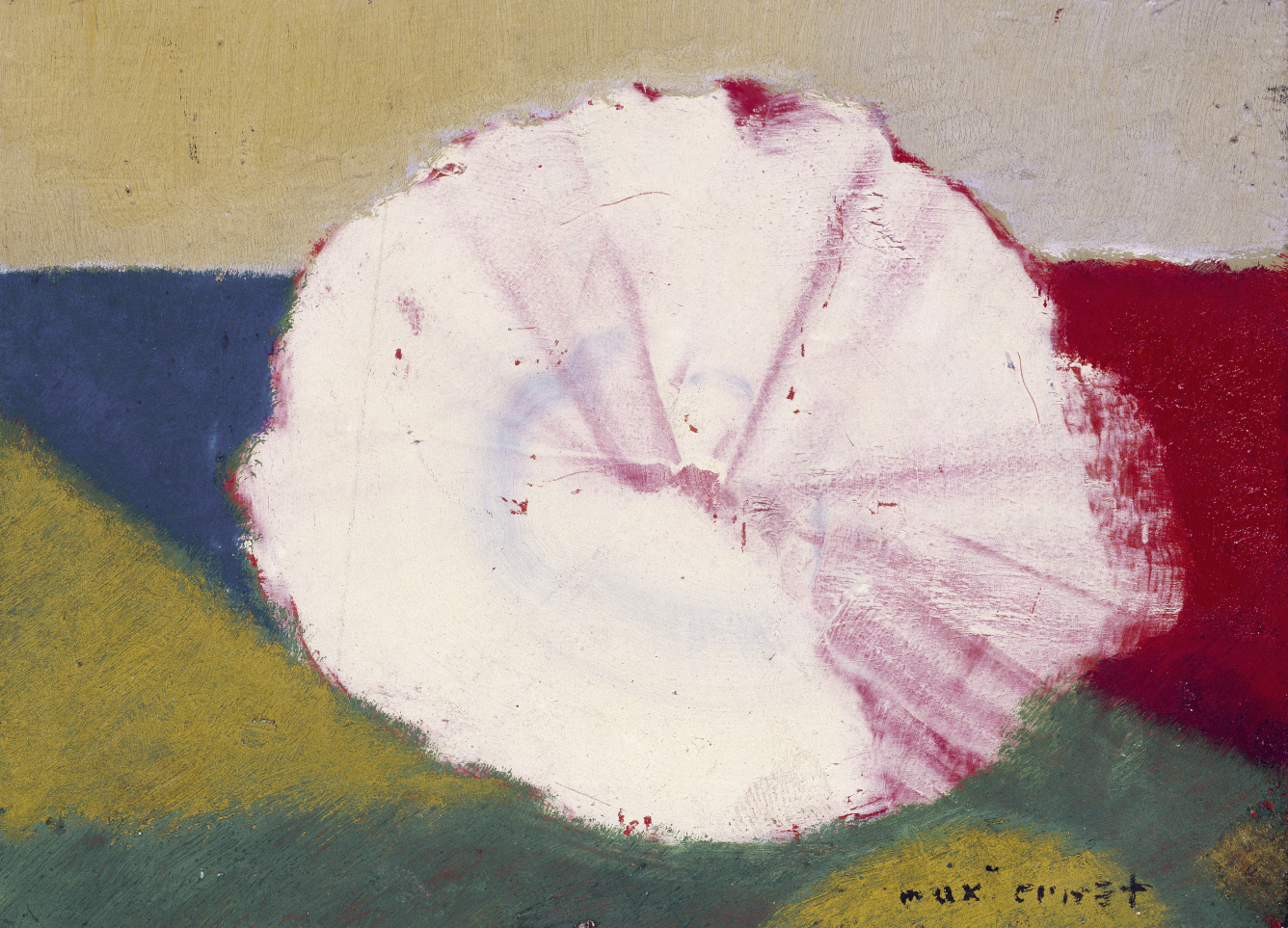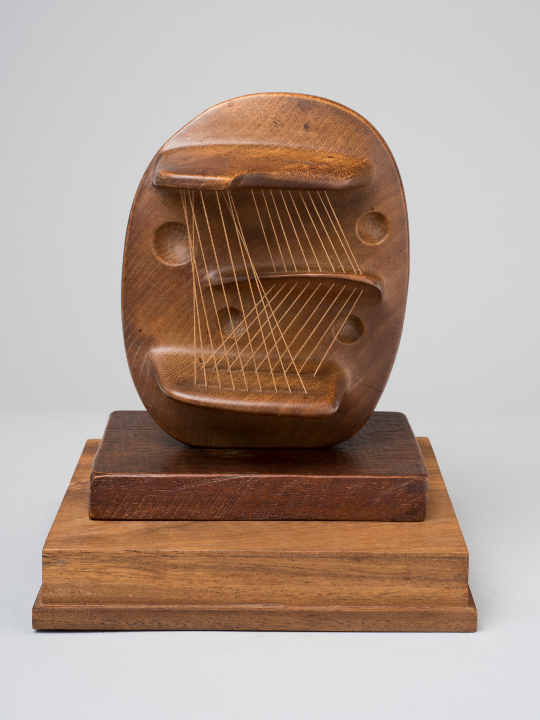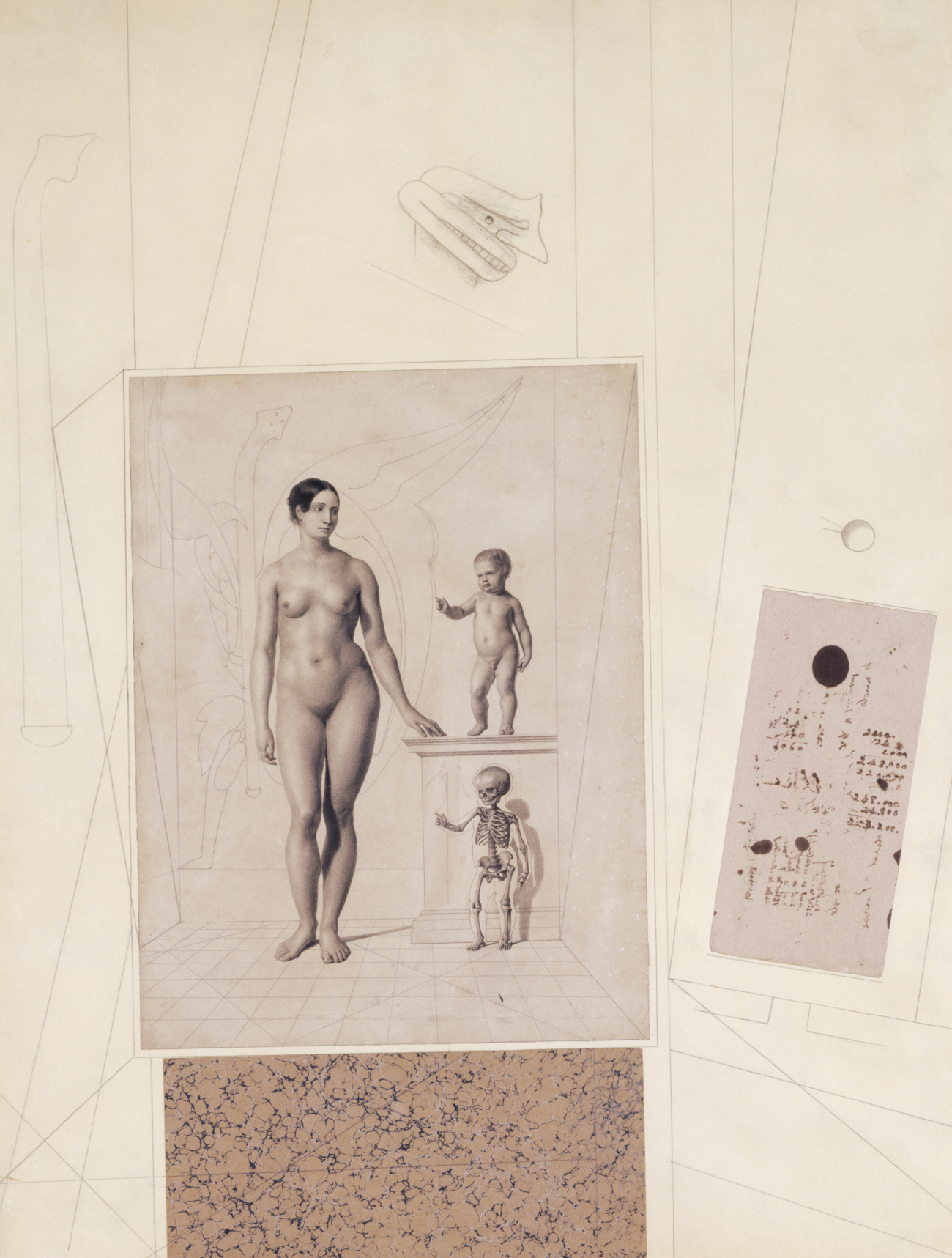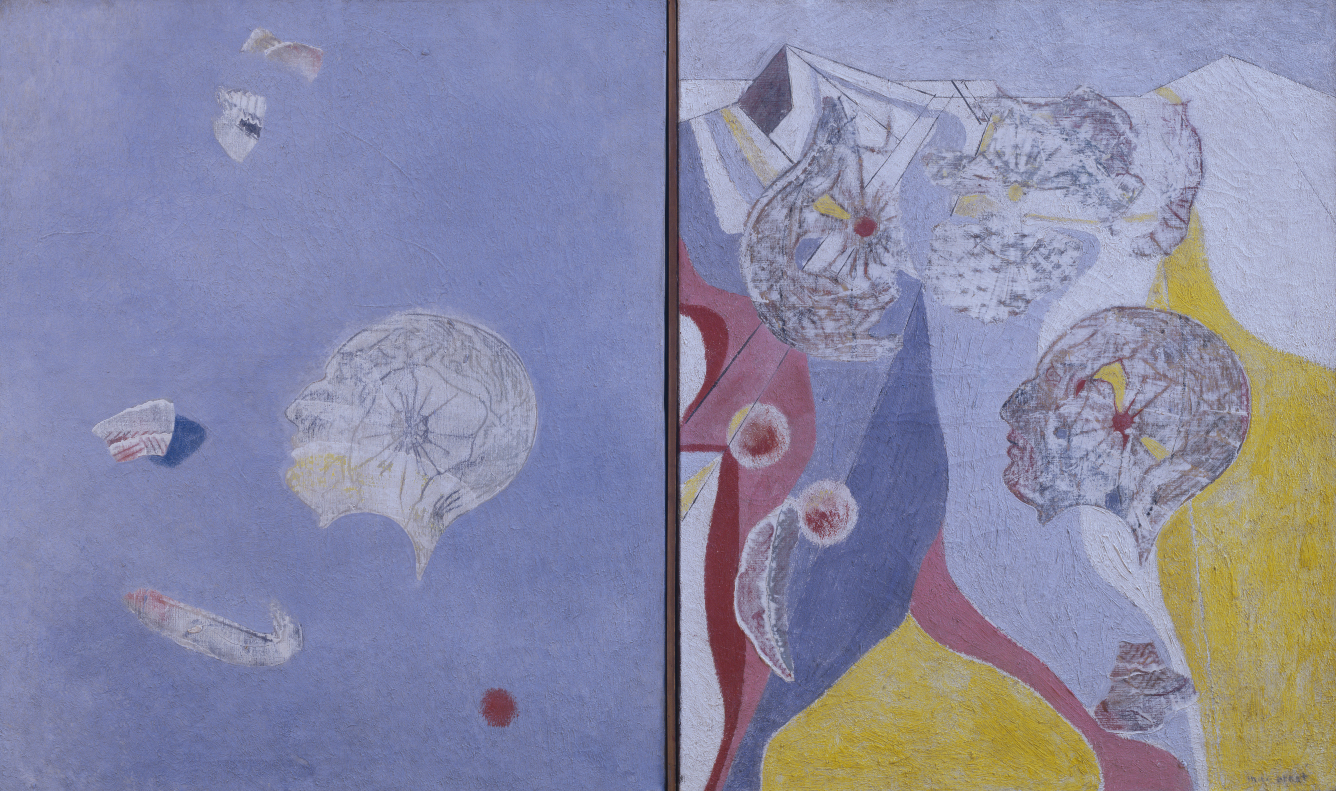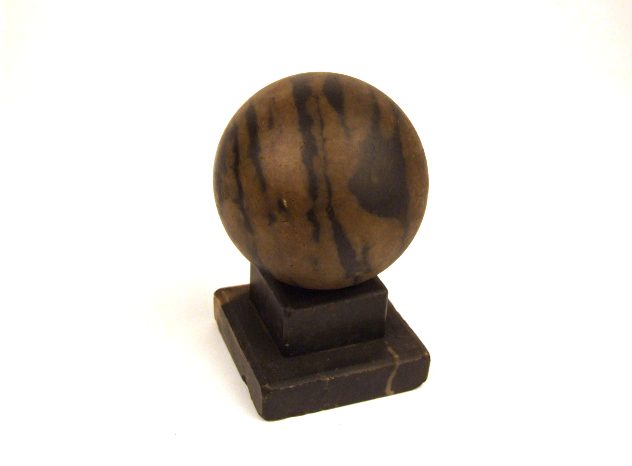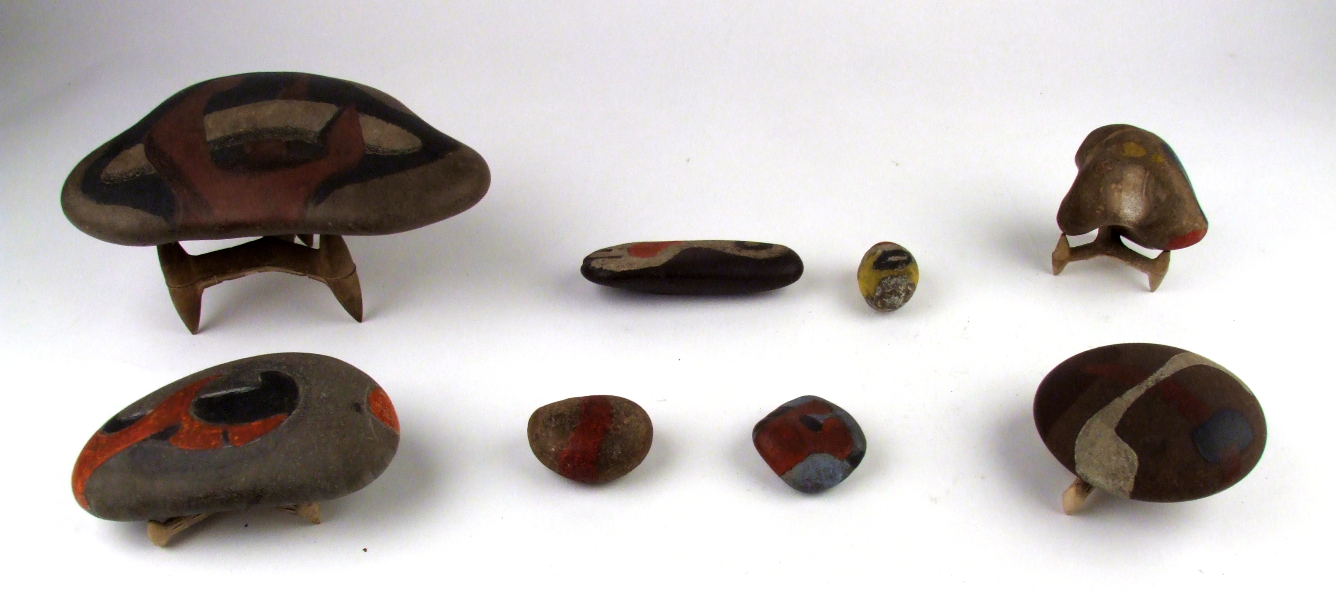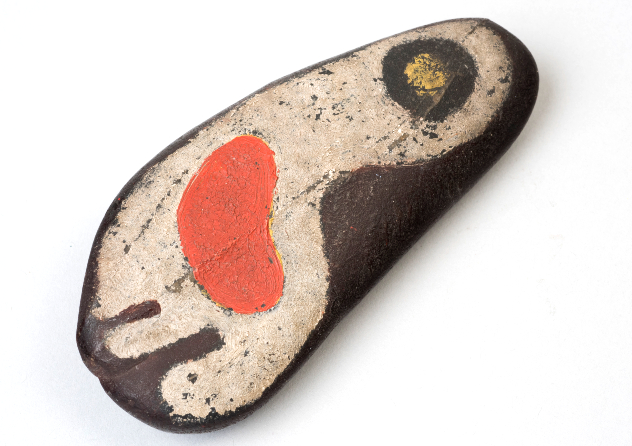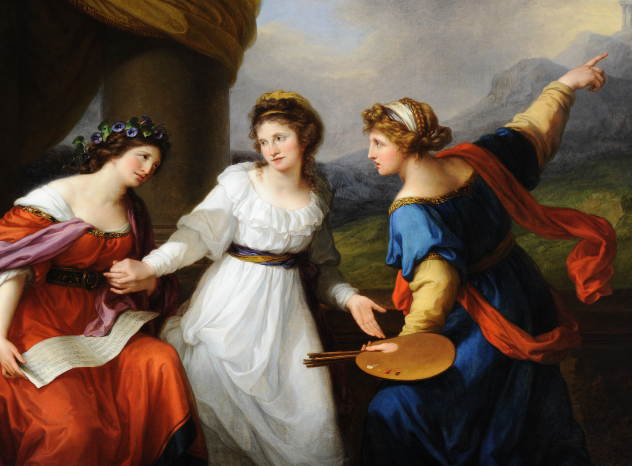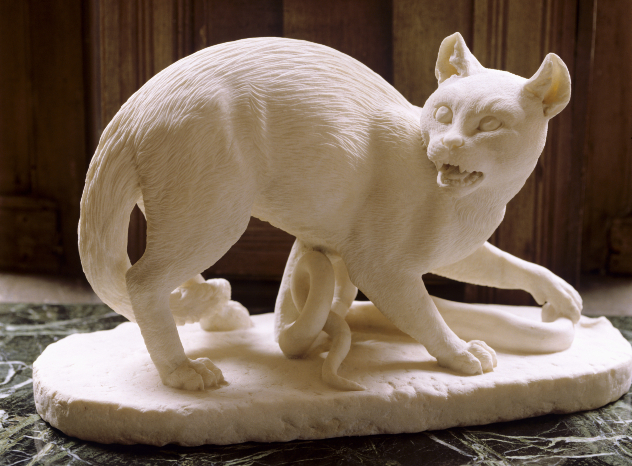A granite pebble painted by the Surrealist artist Max Ernst (1891-1976) is one of the most enigmatic works of art in any of the National Trust’s collections.
Acquired a few years after it was made by the architect Ernő Goldfinger (1902-1987), it remains at 2 Willow Road – the Modernist home he designed for himself and his family in Hampstead, North London. Mysterious forms and rich colours swirl continuously round the stone’s worn and pitted surface. But what is the story of this charismatic object and can we access its secrets?
Found in the mountains
Ernst found this pebble in the summer of 1934 near the Swiss mountain hamlet of Maloja, near St Moritz. He was staying with the sculptor Alberto Giacometti (1901–1966). Both artists became fascinated by the smooth shapes into which the local granite had been fashioned by the Alpine glaciers. This egg-like stone was plucked from a stream that flowed near Giacometti’s house.
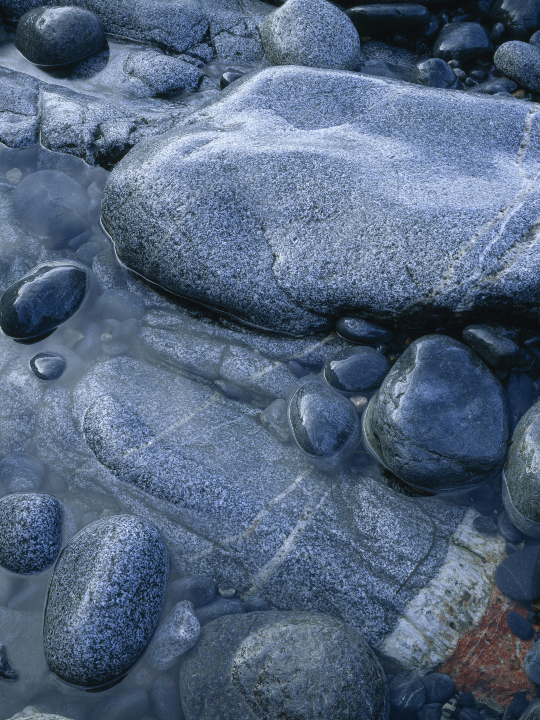
Granite stones in Cape Cornwall similar to those encountered by Ernst in the Alps
©National Trust Images/Paul Wakefield
Ernst described their delight in this discovery in a letter to a friend:
We are working large and small granite blocks from the moraines of the Forno Glacier. They have been wonderfully worn down by time, ice and weather; just in their natural state they look fantastically beautiful enough; the human hand can really add nothing to this. Why not therefore simply leave the work to the elements and instead content ourselves with scratching into them, rune-like, our secrets?
Ernst carved shallow reliefs into some of these stones. Others, like this one, were painted with abstract designs. Up until this point, Ernst had worked primarily in paint and collage so these were his first sustained foray into three-dimensional art.
Mysteries of the mind
The surface of the stone swims with organic but abstracted forms reminiscent of microorganisms or the play of oil on water. Ernst applied black, red and yellow pigment to its surface but also allowed areas of the natural granite to show through. These shapes flow all the way around the stone, obeying the smooth curves of its overall form. The pebble both is transformed and revealed.
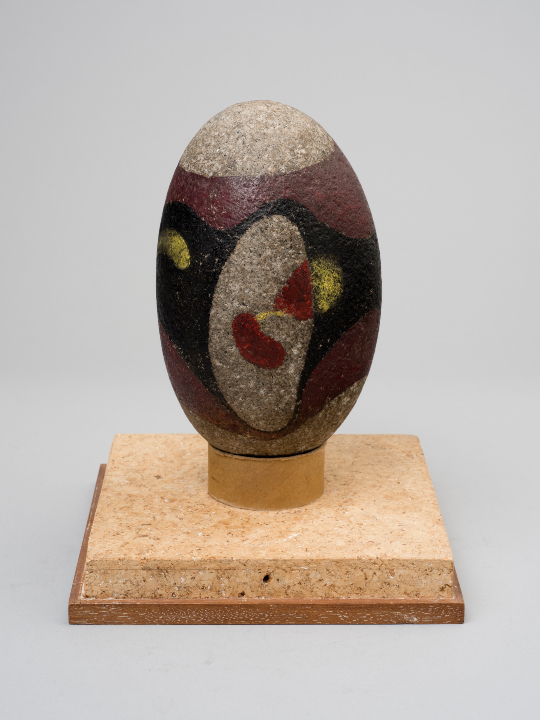
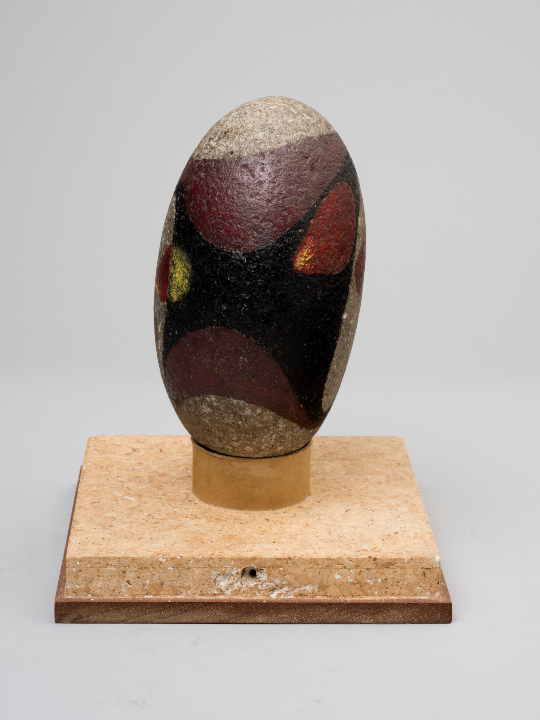
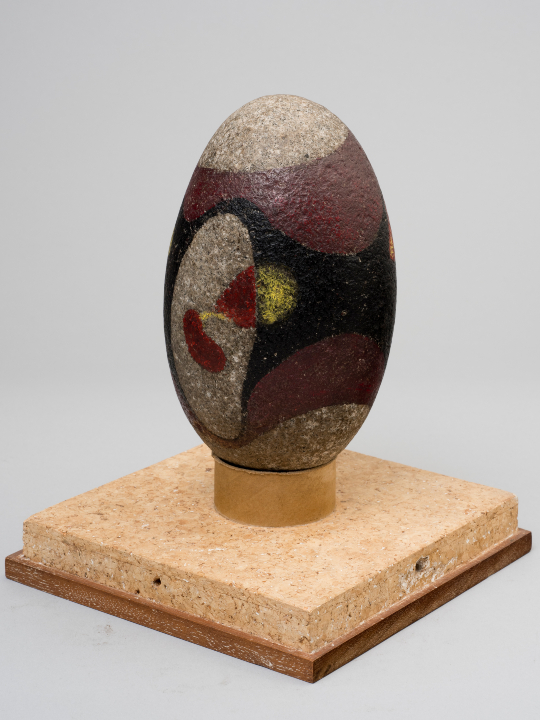
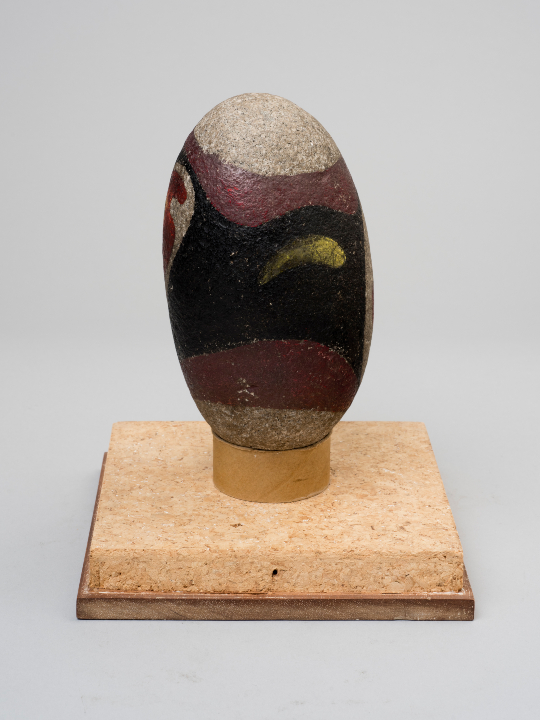
This way of painting is a version of ‘automatic’ art by which the Surrealists sought to express the subconscious mind. As Ernst turned the stone round and around in his hand, the skill of his brush allowed him to respond intuitively both to the object and to his own impulses. The secrets conveyed by these ‘rune-like’ marks are those of the artist’s innermost, non-rational self.
Ernst and Goldfinger
Ernst sold his painted stone to Goldfinger in 1939, presumably prior to his internment as a German national in France at the outbreak of the Second World War. This was the same year that the architect built his house at 2 Willow Road. Hungarian-born Goldfinger tended to buy works of art from his own cosmopolitan circle of friends and acquaintances. These included Henry Moore and Barbara Hepworth, who lived nearby, and Ernst’s close friend, Roland Penrose.
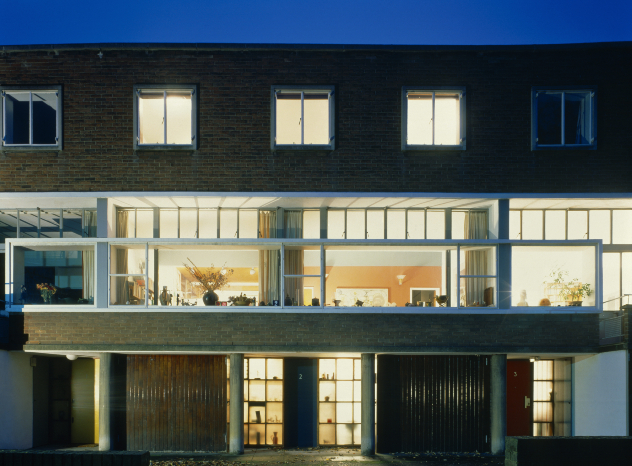
Exterior view of 2 Willow Road at night
©National Trust Images/Dennis Gilbert
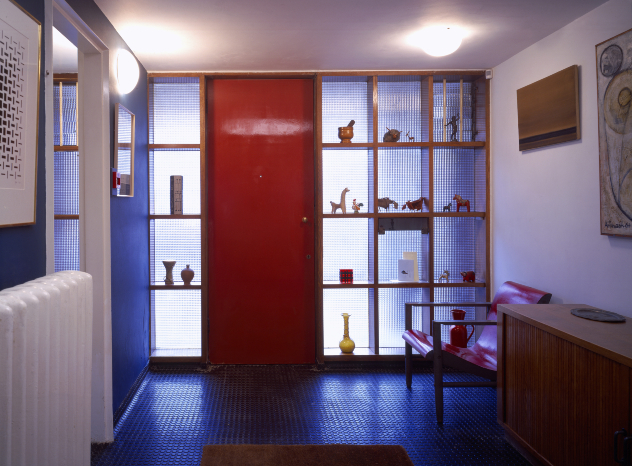
Entrance Hall at 2 Willow Road
©National Trust Images/Dennis Gilbert
Goldfinger eventually owned at least two other works by Ernst. One of these is a collage in which the grinning face of the artist’s bird-like alter ego, ‘Loplop’, appears at the top of the composition. Like the Alpine granite pebble, the paper cuttings pasted into the collage are ‘found objects’ transformed into art. The angled cutting on the right features ‘automatic writing’ which is the textual equivalent of his painterly mark-making.
The other Ernst in Goldfinger’s collection, Le Passé et Le Present (Past and Present), is a two-part canvas in which colourful forms and patterns float in and around two human heads – as if the contents of the mind have been made visible. One side is dominated by a wash of celestial blue, the other side fractured into irregular shapes and contrasting fields of colour. The title suggests that each half of the work deals with the contrasting experiences of the past and present although how they are divided remains elusive. Typically for an Ernst, the painting resists simple interpretation.
The stones of Willow Road
The collection at 2 Willow Road contains several carefully-selected stones. Some of these, like Ernst’s painted pebble, are significant works of art. Others were introduced for their intrinsic qualities, spontaneously formed by nature. This was part of a trend among artists, architects and curators in the middle of the 20th century, who placed striking natural objects in their homes with as much thought and sensitivity as they did their pictures and sculptures.
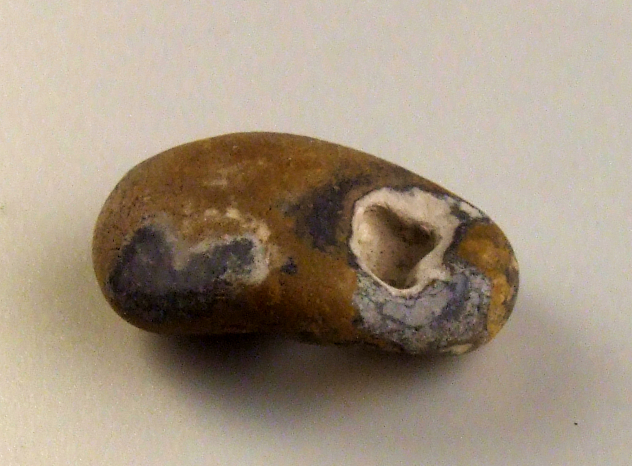
A variegated stone in the collection at 2 Willow Road
Willow Road contains a marble sphere, shaped and polished to bring out its tiger-like stripes of black and green. It is presented on a plinth like a little masterpiece. Another specimen – this time, a small egg-shaped pebble – bears grey, yellow and white patches that echo the spontaneous painted marks on Ernst’s granite stone. It may even have been chosen precisely for this similarity.
Inspired by the Ernst stone, Goldfinger attempted several of his own Surrealist pebbles in the early 1940s. In the early 1940s he attempted several of his own Surrealist pebbles. Eight of these works survive at his house, painted to bring out their globular shape or some surprising resemblance to something else entirely. One long, thin specimen clearly reminded the architect of a human footprint. If these homages lack some of the exquisite mystery of their source, there is no doubt that Goldfinger was fluent in the mischievous wit of Ernst’s Surrealism. When he exhibited them in the 1986 ‘Surrealism in England’ exhibition, their titles included ‘Achilles’, ‘With Yellow Timetable’ and ‘Quack-A-Duck’.
